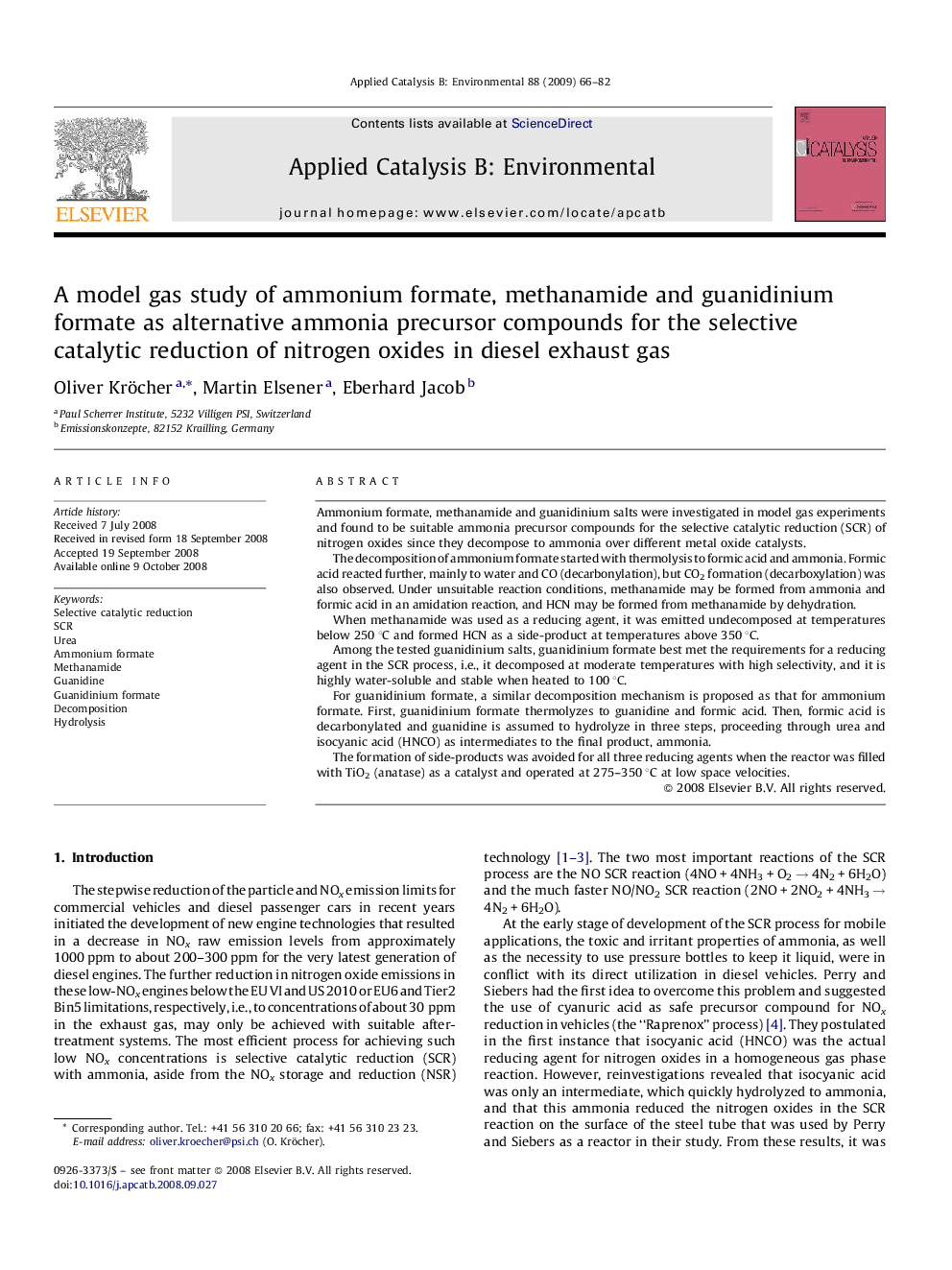| کد مقاله | کد نشریه | سال انتشار | مقاله انگلیسی | نسخه تمام متن |
|---|---|---|---|---|
| 48124 | 46494 | 2009 | 17 صفحه PDF | دانلود رایگان |

Ammonium formate, methanamide and guanidinium salts were investigated in model gas experiments and found to be suitable ammonia precursor compounds for the selective catalytic reduction (SCR) of nitrogen oxides since they decompose to ammonia over different metal oxide catalysts.The decomposition of ammonium formate started with thermolysis to formic acid and ammonia. Formic acid reacted further, mainly to water and CO (decarbonylation), but CO2 formation (decarboxylation) was also observed. Under unsuitable reaction conditions, methanamide may be formed from ammonia and formic acid in an amidation reaction, and HCN may be formed from methanamide by dehydration.When methanamide was used as a reducing agent, it was emitted undecomposed at temperatures below 250 °C and formed HCN as a side-product at temperatures above 350 °C.Among the tested guanidinium salts, guanidinium formate best met the requirements for a reducing agent in the SCR process, i.e., it decomposed at moderate temperatures with high selectivity, and it is highly water-soluble and stable when heated to 100 °C.For guanidinium formate, a similar decomposition mechanism is proposed as that for ammonium formate. First, guanidinium formate thermolyzes to guanidine and formic acid. Then, formic acid is decarbonylated and guanidine is assumed to hydrolyze in three steps, proceeding through urea and isocyanic acid (HNCO) as intermediates to the final product, ammonia.The formation of side-products was avoided for all three reducing agents when the reactor was filled with TiO2 (anatase) as a catalyst and operated at 275–350 °C at low space velocities.
Journal: Applied Catalysis B: Environmental - Volume 88, Issues 1–2, 29 April 2009, Pages 66–82